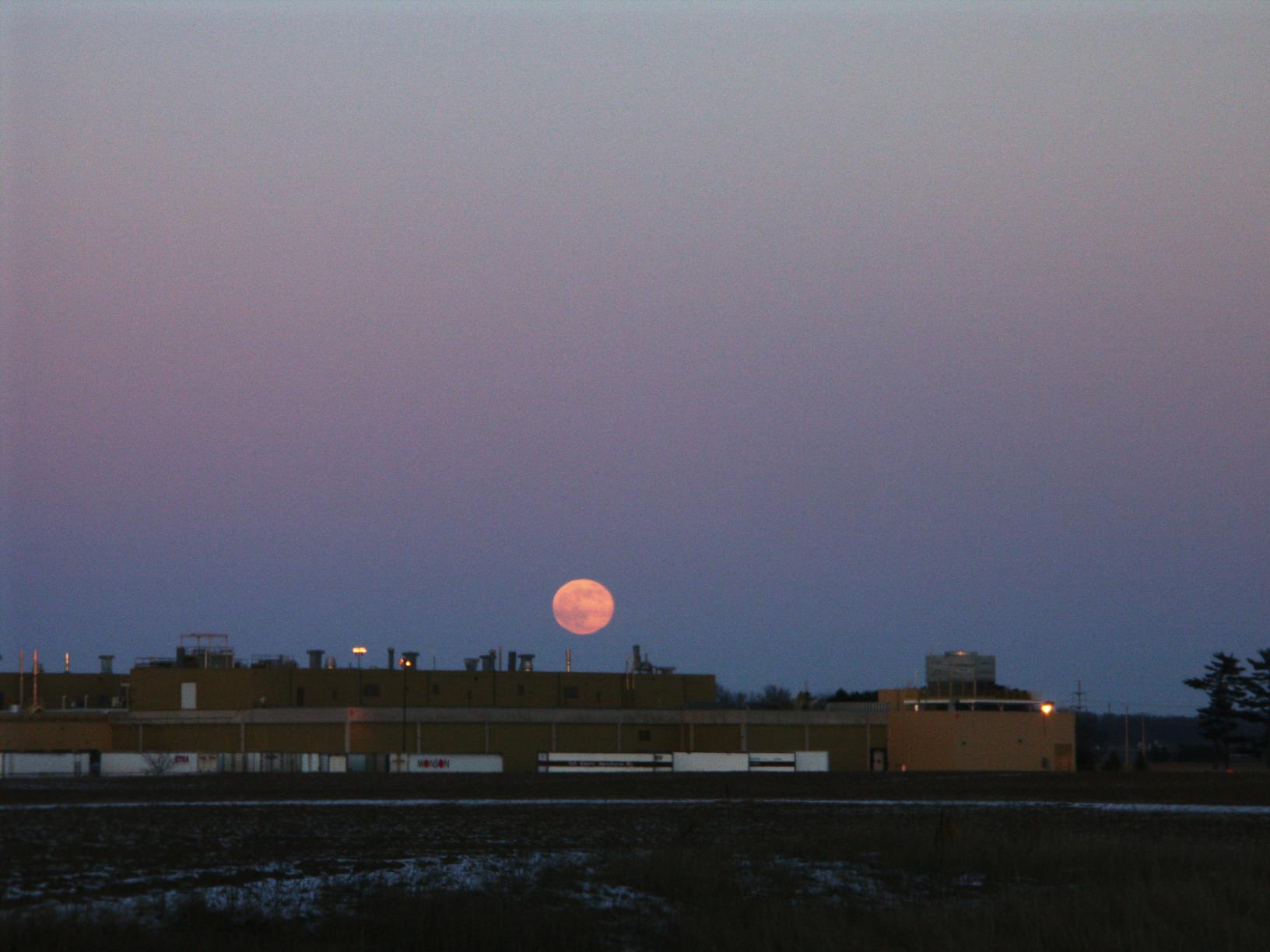

It's an illusion. The moon appears larger near the horizon because the objects near it -- trees, buildings, hills -- cause us to perceive its size as largerthan when it is high above them.
When I was a child, in the 1950's, I read in an encyclopedia that the earth's atmosphere acts to magnify the image of the moon. This is wrong; actually the thicker atmosphere near the horizon squashes the height of the moon vertically without making it wider.
When I was in college in the 1960's my Human Perception textbook quoted some very elegantly done studies showing in detail how this illusion works, but these studies used a "low" moon that was already several disk diameters above the horizon, and it's at the horizon that the moon (or the sun, if you don't care about wrecking your retinas) is non-round and really looks huge.
The studies done by perceptual psychologists elegantly showed that when the moon (or any object) is adjacent to another (such as a tree or building), it is interpreted as being larger in size than when the same object is seen against a void (dark night sky, for example). This demonstrates that the illusion exists, but fails to prove that the image of the moon near the horizon is actually the same size as when high in the sky. How can one prove that the moon in the sky is not smaller than the moon on the horizon?
The answer to this question is found by taking a photograph of the moon when it's just above the horizon and then after it's ascended, and compare them. This is easily done, and yet very few people have bothered to do so -- among them the perceptual psychologists of 60 years ago.
Here are two images of the moon; one taken just after moonrise and the other about 2 1/2 hours later.
|
|
|
I trimmed out the moon images from each frame in identically-sized boxes, thus:
|
|
|
And then I superimposed the images upon each other: note that they are equally wide, but the low moon -- the orange one -- is not as tall. QED.

The moon just about one diameter (~ 2 degrees) above the horizon (orange) is superimposed on the moon about 30 degrees above the horizon (gray). It's clear that the moon near the horizon is not magnified by the earth's atmosphere, but is in fact shrunk vertically by the optical effect of the earth's atmosphere.
Except that this proof of non-magnification does not explain the mechanism of the illusion, but I think that this was well laid out by the perceptual psychologists more than a half-century ago. For other discussions of this phenomenon, see:
